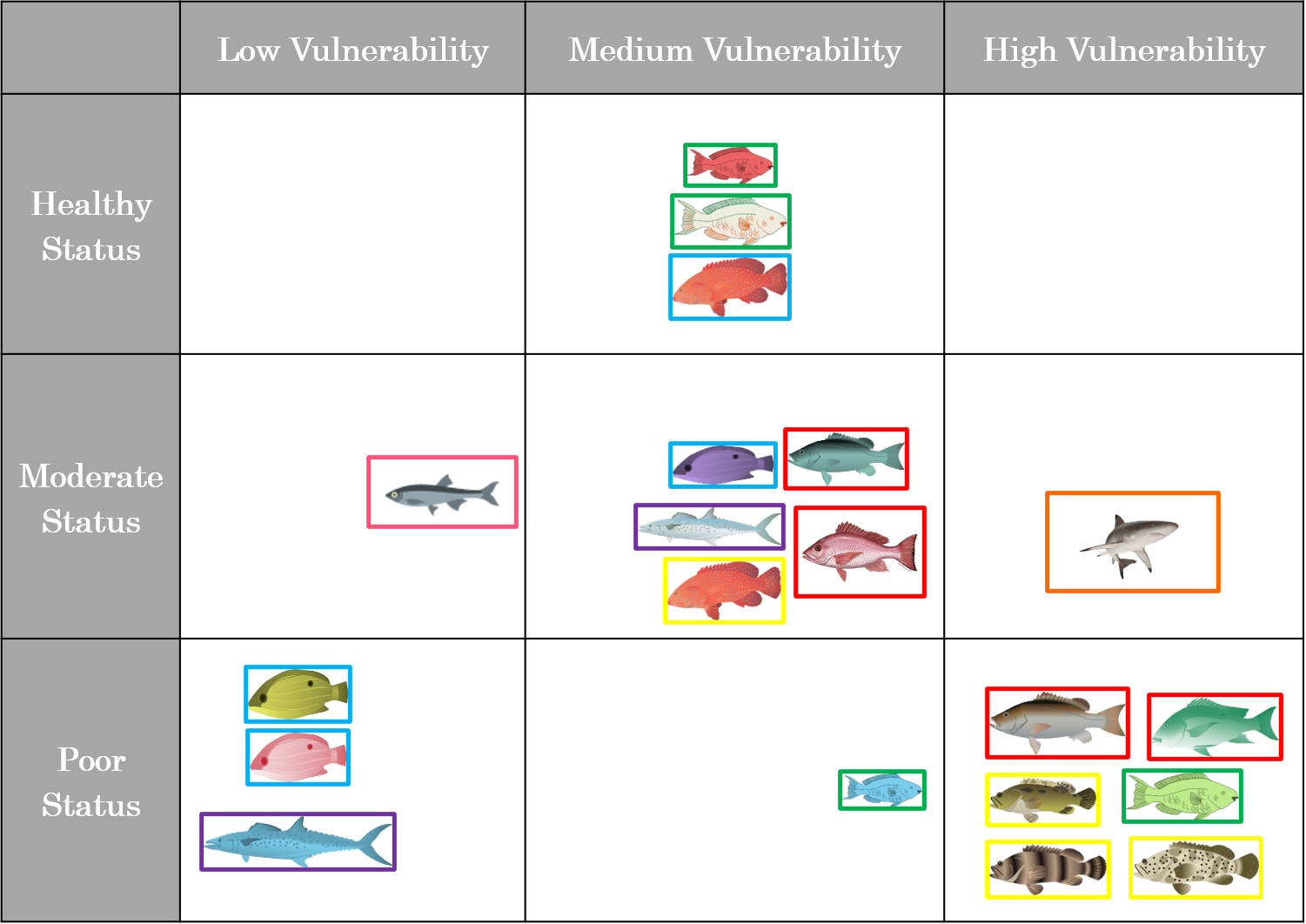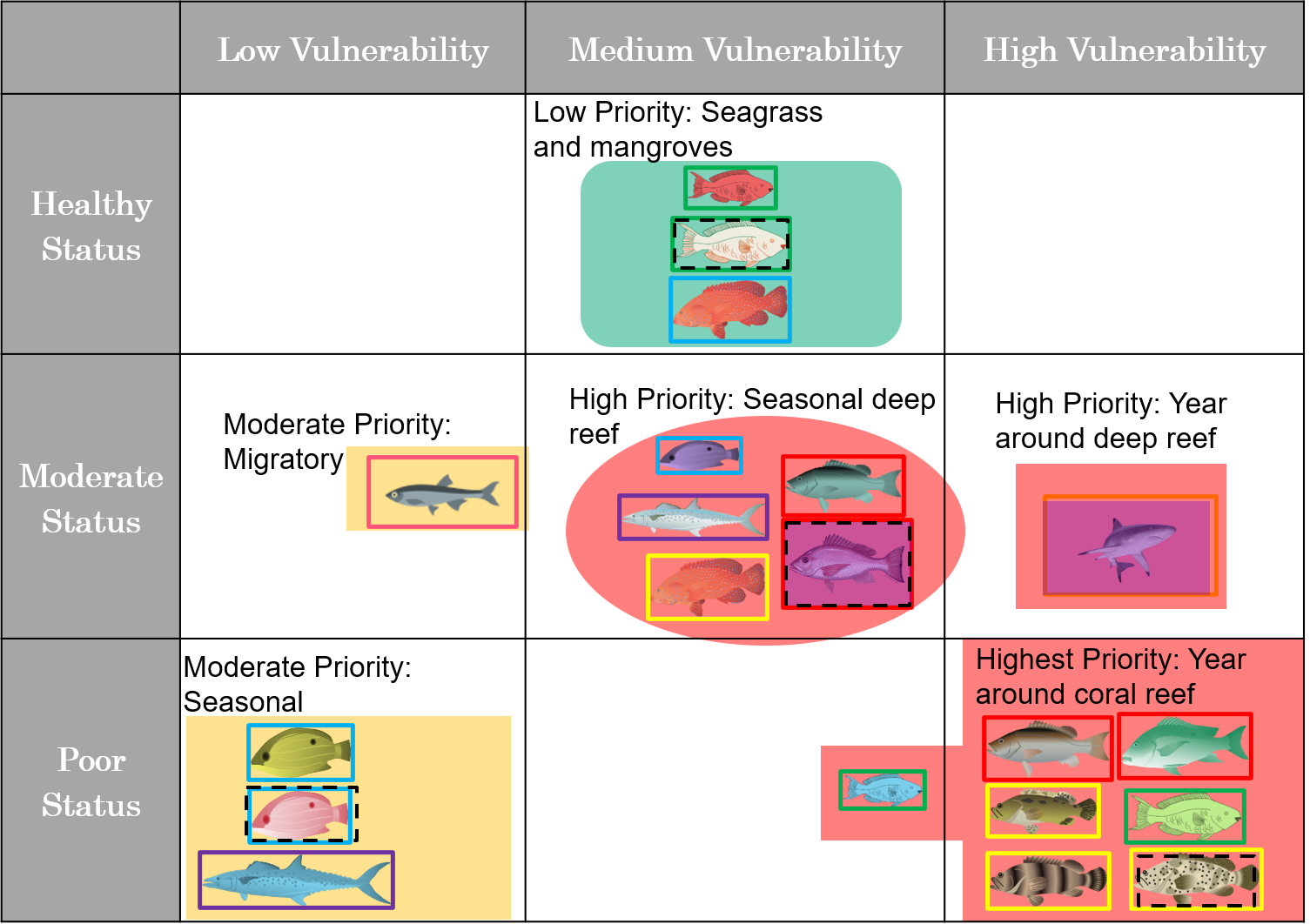Step 6. Prioritization
Through participatory discussions in a workshop setting, stakeholders developed "Organization" and the "Prioritization" matrices for the species they have assessed.
First, species were organized by their PSA Vulnerability scores (i.e., vulnerability to the fishery, assessed at Step 4) and their initial health status determined through the simple assessments conducted at Step 5. This organization was then adjusted based on factors related to how the species are caught (i.e., gear types used), how they can be managed (i.e., seasonality, location, etc.), and stakeholders' level of risk tolerance. This organization process allowed for the formation of Management Baskets, wherein species were grouped to be managed together. Doing so helps to ease the burden of management in a resource-limited multispecies fishery.
These Management Baskets were then prioritized for additional assessment and management based on the stakeholders' level of risk tolerance. Expected climate change impacts (from Step 1) were also factored in at this stage. Because all the targets are expected to be impacted by to climate change (as determined through the Climate Impact Profile), it was decided that any species with even a moderate status and medium to high vulnerability to the fishery should be considered a High Priority for next steps.
Organization Table to Develop Fish Baskets:

Prioritization Table with Fish Baskets and Representative Species:

Stakeholders identified six distinct fish baskets to manage the 20 fished targets, three of high priority, two of moderate priority and one of low priority. Note that two of the baskets contain only one species each - this is because stakeholders determined that the vulnerability status, health status, and/or characteristics of the species and related fisheries were too dissimilar to group them with other species without creating unnecessary risk.
The highest priority management basket contains species caught in year-round fisheries within the coral reefs: three groupers, two snappers and two wrasses. There are two high priority baskets - one of these contains only the reef shark, while the other has five targets all caught seasonally on the deep reef: two snappers, one grouper, one grunt and a jack. The moderate priority seasonal and Low Priority seagrass and mangrove baskets each have three targets. For each basket containing more than one species, stakeholders also selected representative species for which subsequent analyses will be conducted. These species are outlined in black dotted lines. Finally, species highlighted in purple were identified as especially vulnerable to climate change through the CVA conducted at Step 1, and will thus be monitored for indications of these impacts.
At this step, we do recommend continuing on through Step 9 for an in-depth assessment of all stocks if possible, although if necessary, additional assessments of lower-priority stocks and baskets can be postponed. To ensure adequate data are available to conduct Step 9 assessments, we will continue to collect SCUBA visual survey, length data, and catch data, watching for signs of increased fishing pressure or reduced abundance that can be explained by increased fishing pressure (see Step 10, Interpretation).

